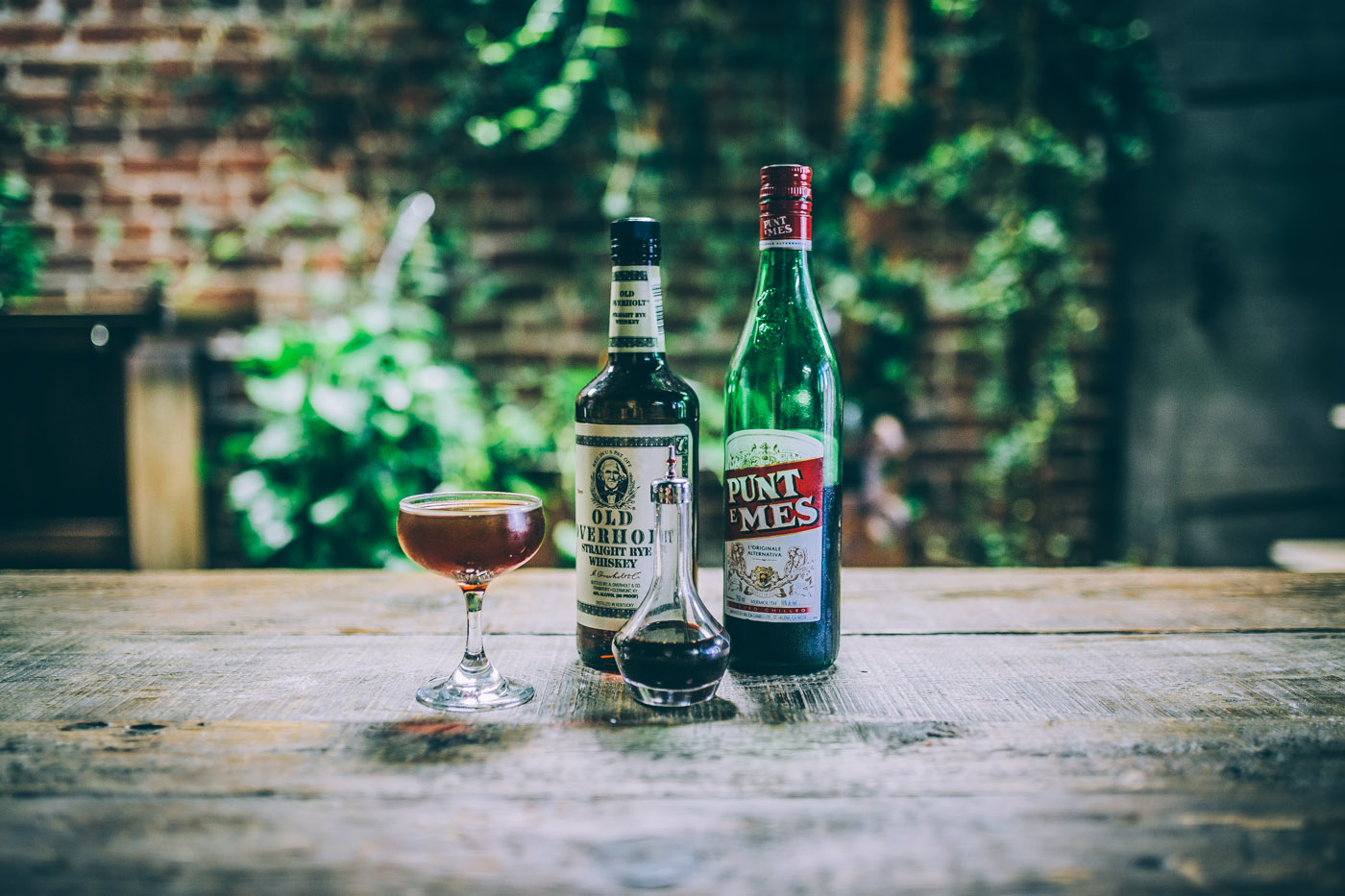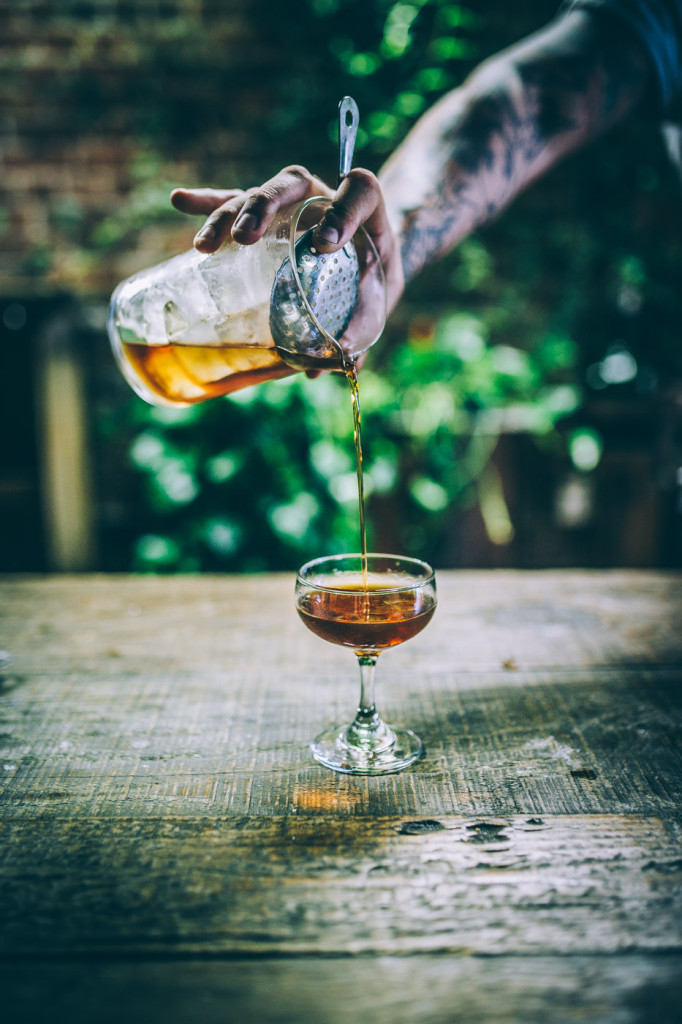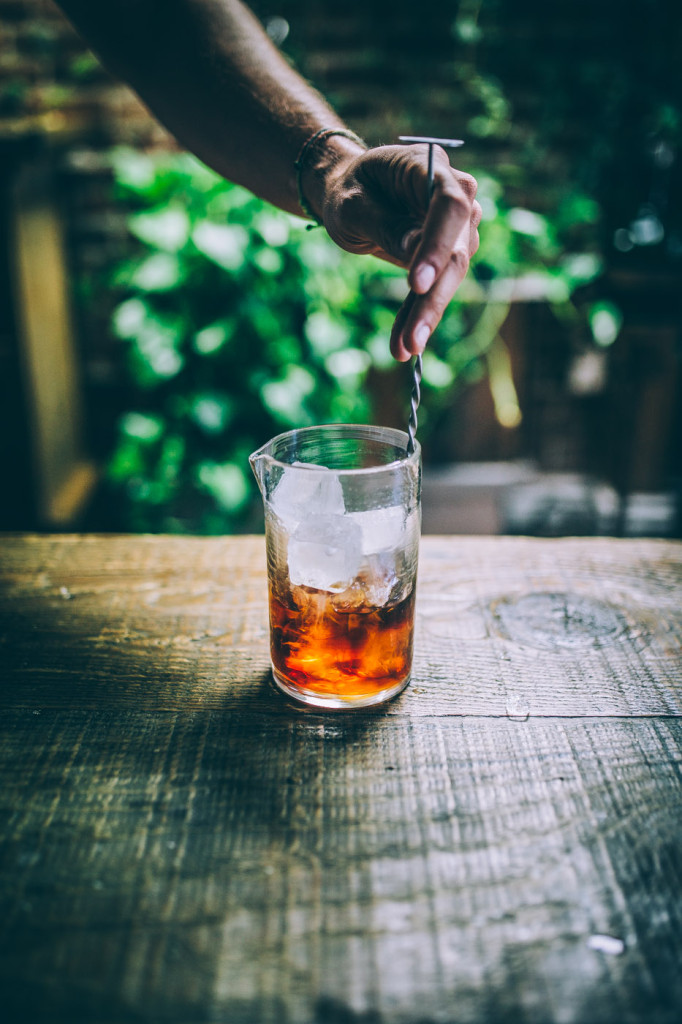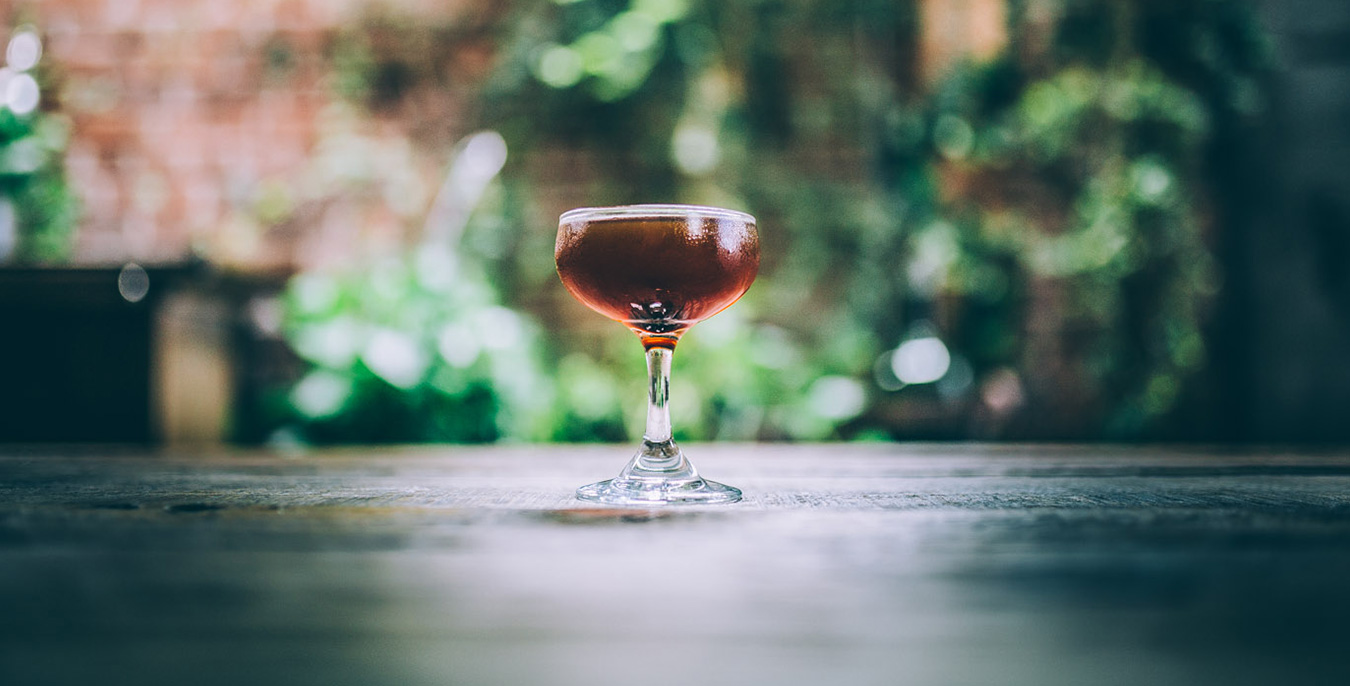Each time I sit down to a bar and order a Manhattan, I allow myself to think boundlessly about the keys to the truly great cocktails. To the classics. To the dynasty drinks. And I think about why it is that I happen to enjoy the hell out of this one.
I think about the instances in which this drink was ordered before I ordered it. The eras in which it was enjoyed, the settings in which it was served, the vessels from which it was drunk. I think about the drinkers who drank it and where they did it and why. The bartenders who mixed it and the tools they used, the resources at their disposal then and how they’ve changed throughout the more-than-a-century since its initial reputed invention.

The Manhattan
2 oz. Rye
1 oz. Sweet Vermouth
2 dashes Angostura
Add all ingredients to chilled Boston glass, add cracked ice and stir for approximately 25-30 seconds, strain into chilled glass.
With each sweet-sharp and assertive sip, I think about the connection I’m making with those people and places and periods. I ponder the power of this basic drink to transcend time, to have persisted throughout more than a dozen decades, 15 presidents, two world wars and countless epochs of evolving fashions in which lesser drinks have since fallen out of public favor.
I think about the cities that my Manhattan has been. A well-traveled drink, popular and pervasive across regions perhaps in part due to its uncomplicated composition; a Manhattan is made from three basic components: rye whiskey, sweet vermouth and aromatic bitters––and customarily finished with a cherry. I ruminate on its elemental 2:1 ratio. And while it’s clear that bourbon is enjoying a moment, rye still has the monopoly on the Manhattan––the former simply too sweet to keep in check a fortified wine even half its weight by volume.
I think about the legend of its creation, reportedly born in the late 1800s. An appropriately stately story often accompanies the Manhattan; that it was first mixed and served at a gala meant to honor a presidential candidate by the name of Samuel J. Tilden (a man whose family was made famous by their production of a cannabis-based medicinal extract). There is some debate about the circumstance, but one origin alleges it was Winston Churchill’s mother, potentially the hostess of the party, who created the drink. Other interpretations suggest she would have been pregnant at the time and thus likely not stateside at all. But regardless of the hand that originally stirred the drink, the venue––The Manhattan Club––still lays claim to providing the platform.
I think about those first sips that night. The men in top hats and tail coats, toasting in support of their choice for leader of the free world; a civilized drink created for a class of people who intended to run their country.




I think about its evolution and its changes, its resilience through ages of unpredictability, the principle spirit substituted and the drink sustained by Canadian Whiskey during the dry days of Prohibition in which rye was tough to come by.
I think there’s something symbolic about its simplicity. The city after which it is named indignantly denying to be associated with an incomprehensible string of ingredients and fussy technique, instead adopting a confident cocktail that has nothing to prove and nothing to hide. With just three staples, a stir and a strain, anyone from a beverage novice to a seasoned barman can quickly execute an exemplary Manhattan.
I’ve been around the city blocks; I’ve paid visit to the Brooklyns (substitute equal parts maraschino liqueur and Amer Picon for vermouth), the Red Hooks (a relative of the Brooklyn that omits bitters), and the Carroll Gardens (an especially Italian twist with an amaro addition).
I’ve been happy to enjoy a bar’s house variation and have embraced novel garnishes, new brands of bitters, or the “perfect” version that calls for equal parts sweet and dry vermouth (delicious, indeed; but to me the original is perfect all on its own). I’ve had it with all manner of liqueurs and amaros, on the rocks and with bourbon or Scotch or even tequila. I sometimes find the Fanciulli, made with Fernet Branca, to be acceptable as a second choice.
I consider other drinks; I review their ingredients and appreciate their attempts to establish their own Manhattan-esque legacy. I even sometimes toy with the idea of sampling something new.
But for me, the Manhattan is ritual. It’s long-formed habit that I find it hard to break. And like the city itself, my cocktail is subtle and smooth, soaked with history; it’s sophisticated and refined, and just a little bit ruthless.
I think about all the Manhattans I have yet to have. What they might celebrate or what sorrows they’ll assist in stamping out. The drink itself is a simple solution, starkly formulated, reliable in its ceremony; the occasional and always appreciated sidecar, the fulfilling conclusion of a rye-steeped cherry after the final fruit-stained sip has been drained.
Toward the bottom of the glass, I think about the dangerous ease with which a second round can be stirred up; a drink that is easy to remake but an experience that is difficult to replicate. Typically it’s a temptation that I resist, entirely satisfied with the singular cocktail––the only one I ever really need.
When I pay my tab, I sometimes think about buying one for the person next to me. Because if you teach someone to truly appreciate the Manhattan, and you might as well turn over the keys to the city.
On my way out of the bar, connected in a comfortable haze to my historic drinking compatriots, I have a final reflection. Forget the city, I think. I’d give my kingdom for a Manhattan.







Our comments section is for members only.
Join today to gain exclusive access.